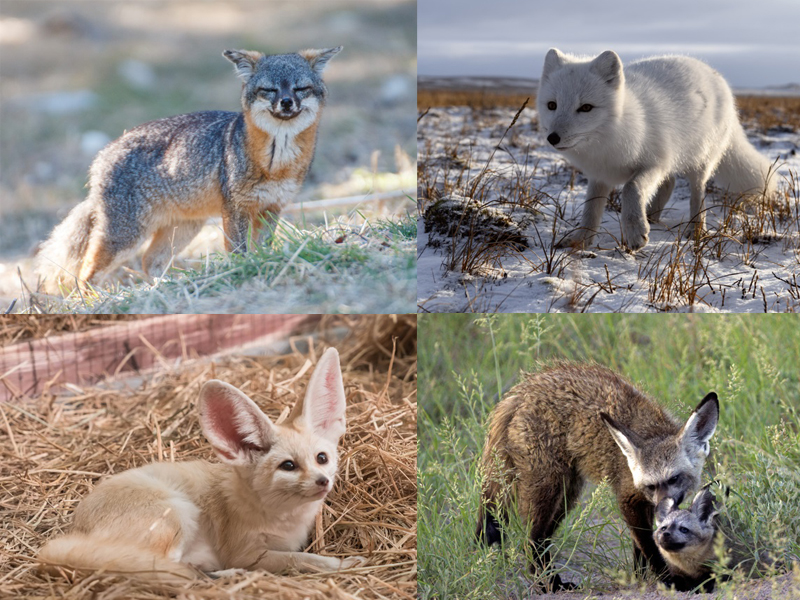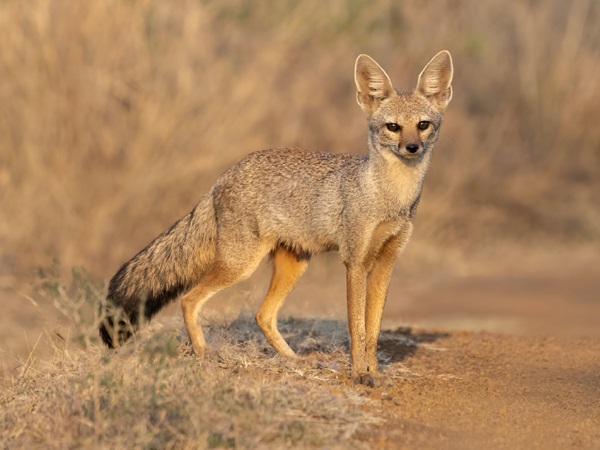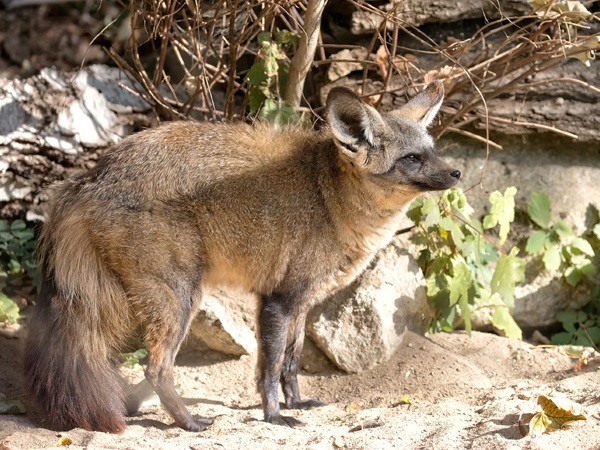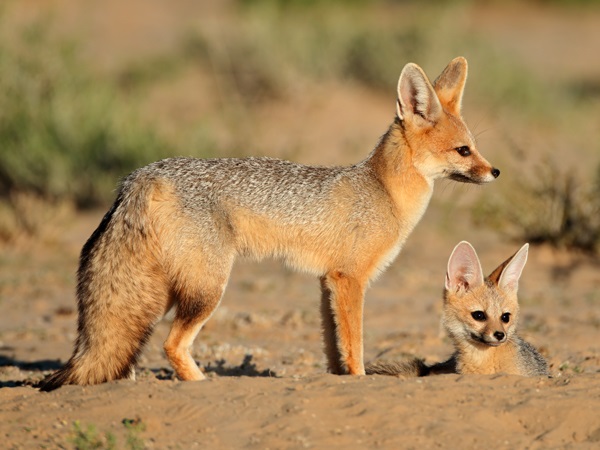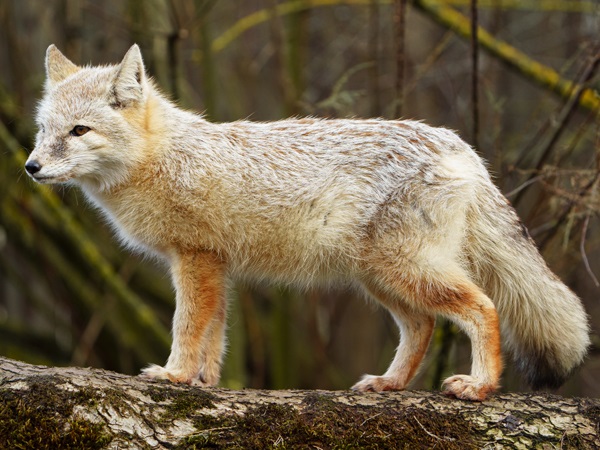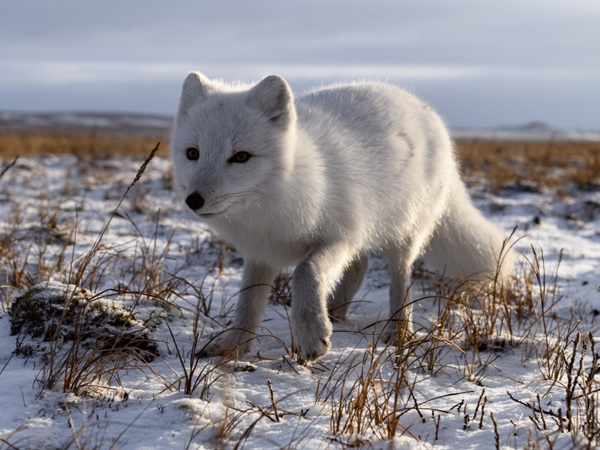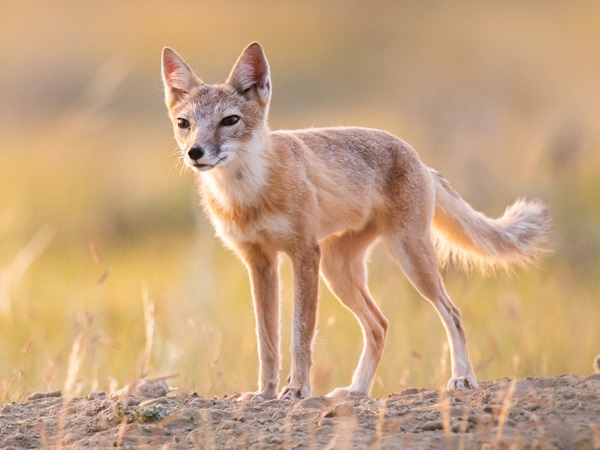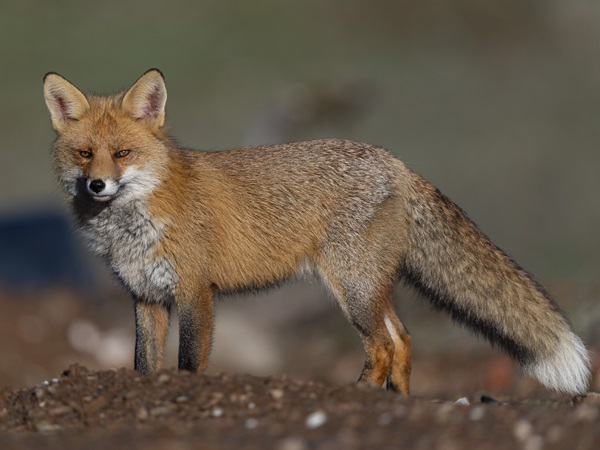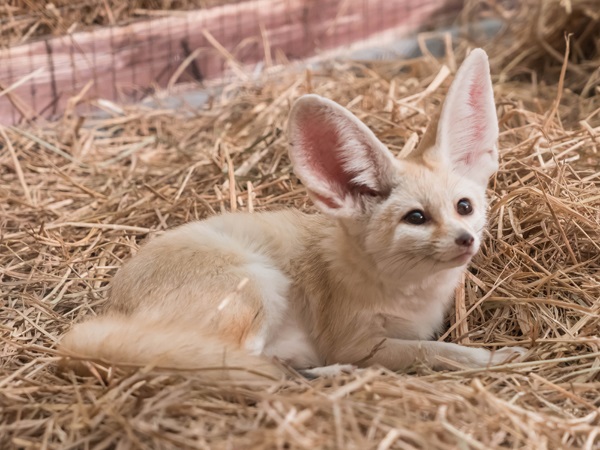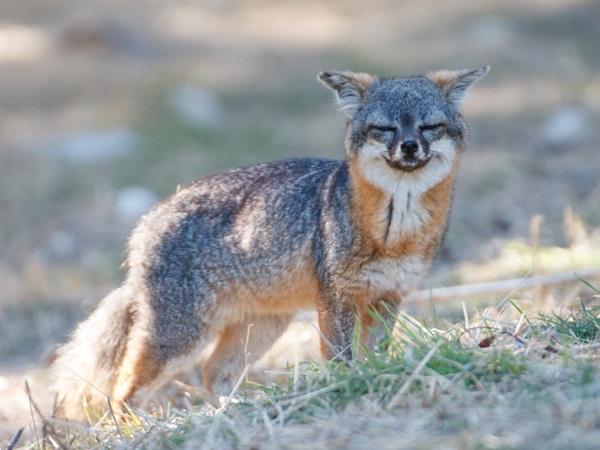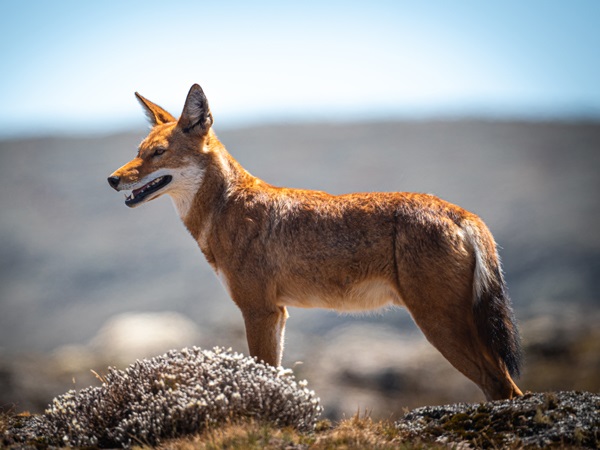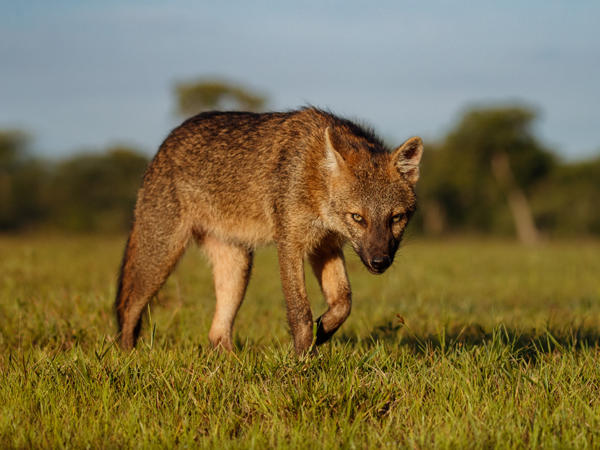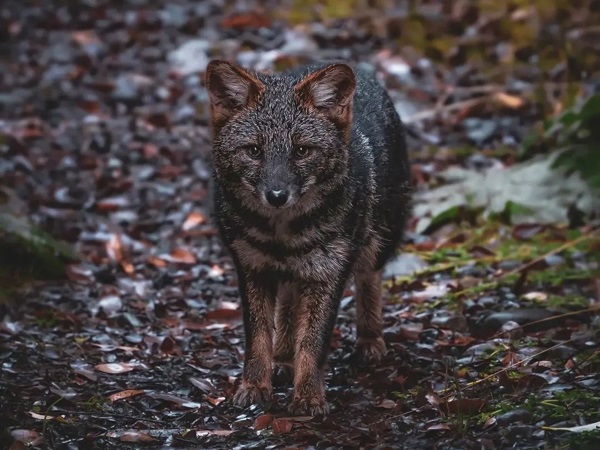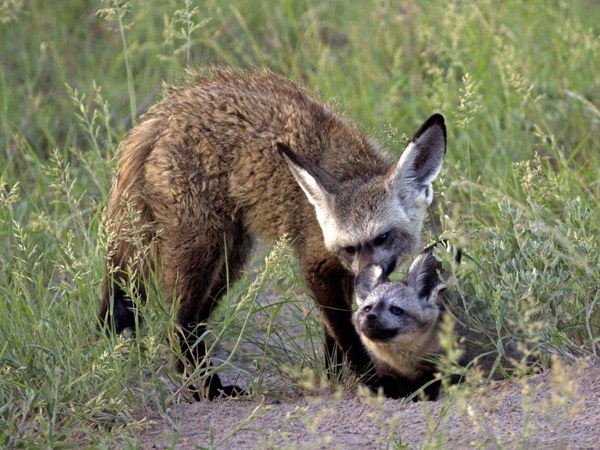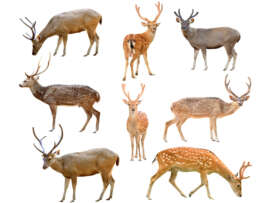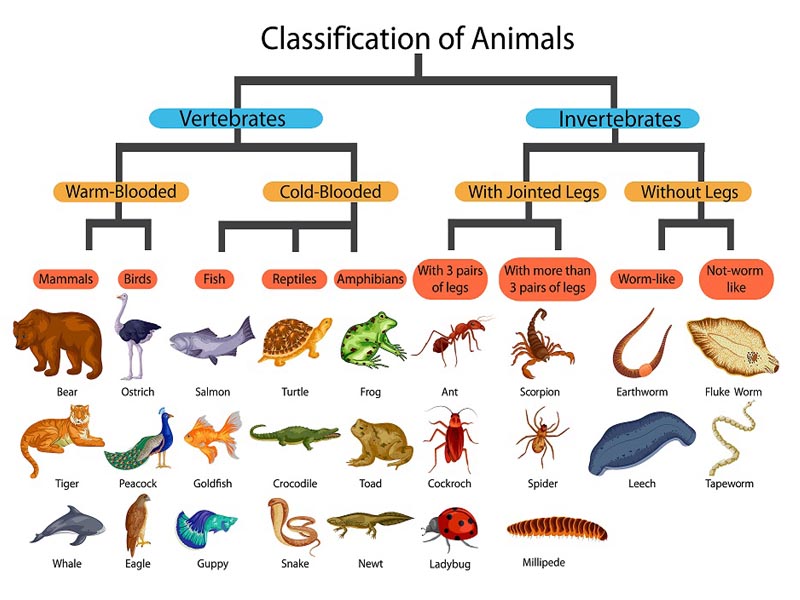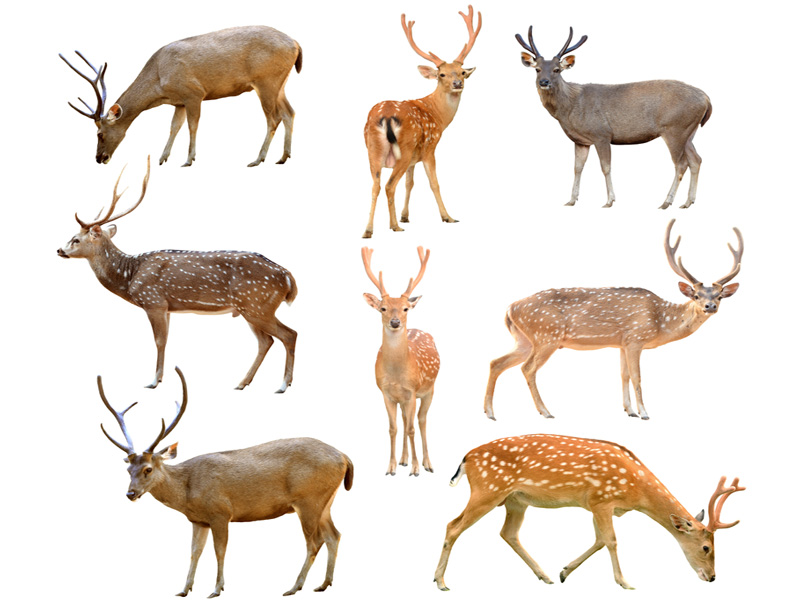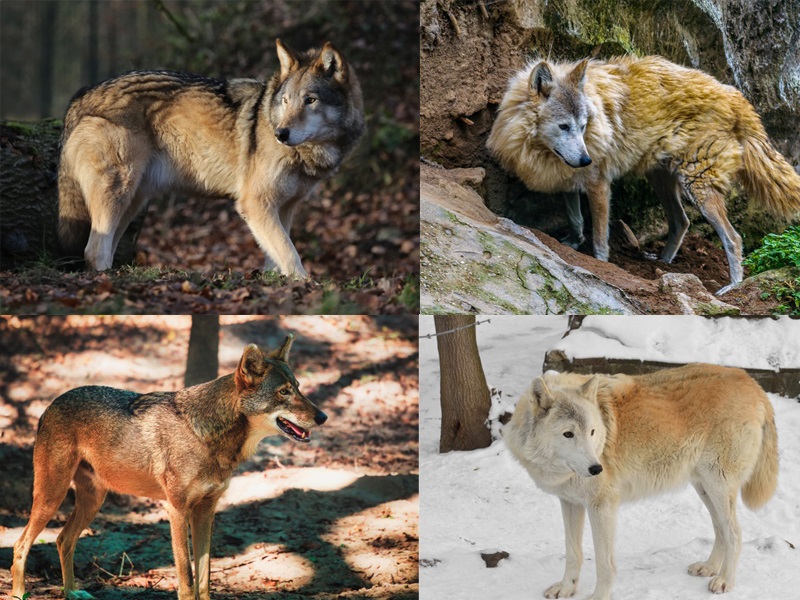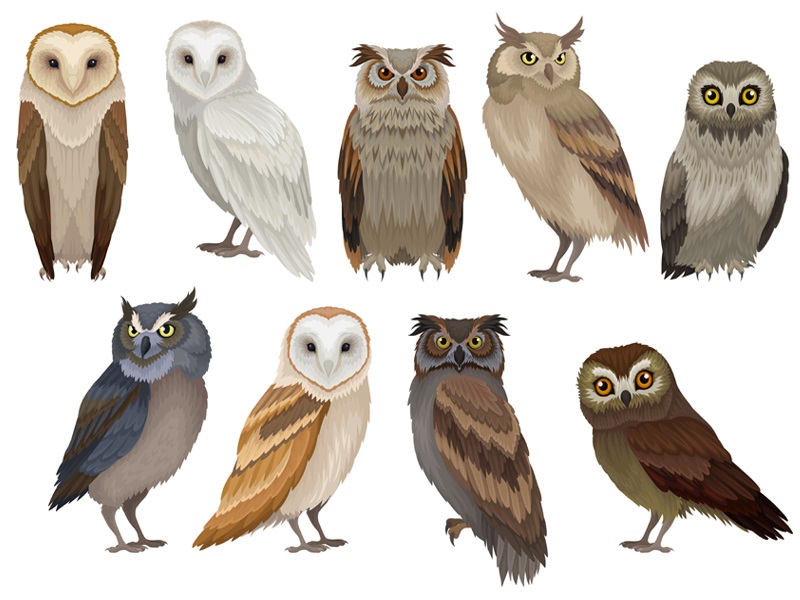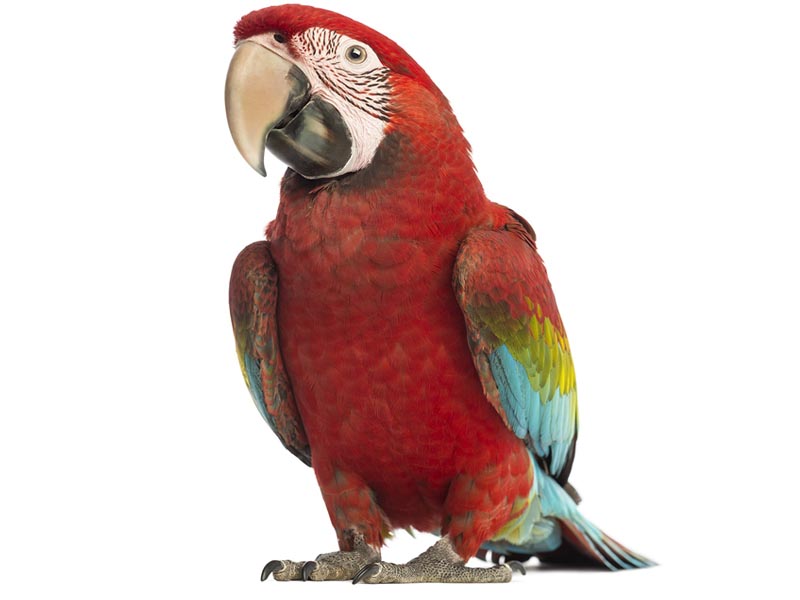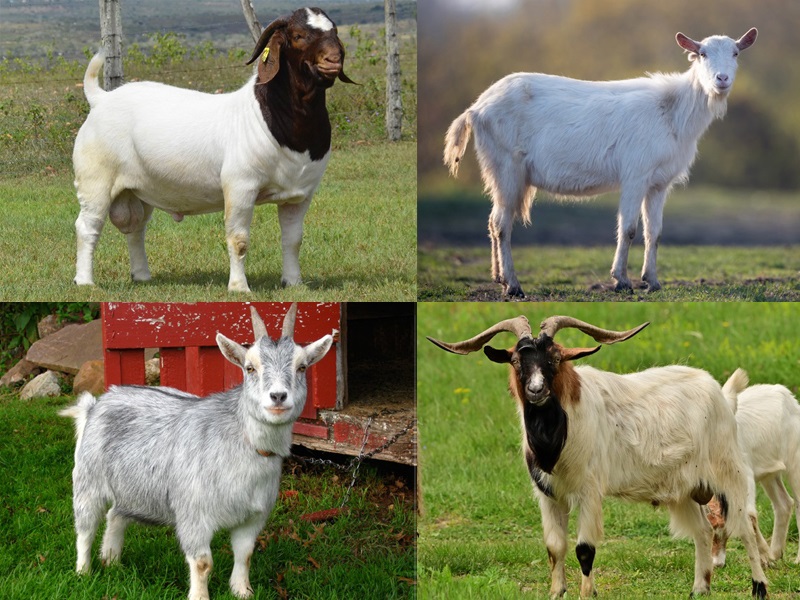There is no denying that foxes are some of the most captivating animals on the planet, whether you think they are sly and cunning or cute and fluffy. But how much do we know about these fantastic canines with nearly two dozen fox species on Earth? In this article, we have presented you with different types of foxes with pictures and characteristic features that will help you explore the species better. So read on to know more!
What is a Fox?
Foxes are omnivorous mammals that belong to several genera of the Canidae family that come in small to medium-sized. Foxes are often called canids or dogs. The long bushy tail, upright triangular ears, slightly upturned snout, and flattened skull are characteristic features of this animal.
Fox Categories:
Here is the list of the fox classification of six genera that most of the foxes come under:
Genus Vulpes:
All the animals known as true foxes come under Genus Vulpes. Compared to other types of canines, true foxes are much smaller.
Genus Urocyon:
These foxes are closely related to the Genus Vulpes, although they are not true foxes. It is believed that all the fox species have evolved from the Genus Urocyon.
Genus Octocyon:
The bat-eared fox is the only fox species under the genus Otocyon classification. Scientists reclassified these animals as foxes instead of jackals.
Genus Lycalopex:
Genus Lycalopex contains the largest species of foxes after the Genus Vulpis. In English, these species are called South American foxes collectively. They are closely related to the Genus Cerdocyon and are found in South America.
Genus Cerdocyon:
Another monotypic fox with only one crab-eating fox species is Genus Cerdocyon.
Genus Canis:
Genus Canis is the final fox species that includes coyotes, domestic dogs, and coyotes. However, there is a debate among taxonomists about whether this species is a fox.
See More: Different Types Of Wolves
15 Main & Different Types Of Foxes:
We all would love cute foxes and would love to learn more about them. Therefore, we have given you an insight into the different types of foxes and their characteristics.
1. Bengal Fox:
Also called the Indian fox, the Bengal fox is a type of small foxes found only on the Indian subcontinent. It is considered the true species’ smallest fox. Sixty per cent of its total body length is accounted for its bushy tail. Rabbits, birds, insects, and lizards are small animals Bengal foxes consume.
The International Union for Conservation and Nature (IUCN) currently listed the Bengal fox as a species of least concern. However, hunting decreases the population due to diseases like canine distemper and widespread habitat loss.
Scientific Name: Vulpes bengalensis.
Weight: 2.3 to 4.1 kg.
Length:
- Head and body – 18 inches.
- Tail – 10 inches.
2. Blanford’s Fox:
Blandford’s fox is a canine found in Southwestern Asia and the Middle East. It is named after English naturalist Willian Thomas Blandford. Iran, Pakistan, and Turkmenistan are the places you can find the distribution of this fox species.
The brownish-grey color of most Blanford’s foxes helps them camouflage in sandy desert environments. Because of their relatively stable population. These species are listed as the least concern by the IUCN. These fox species are omnivores, frugivores and primarily insectivores.
Scientific Name: Vulpes cana.
Weight: 0.9 to 1.5 kg.
Length:
- Head and body – 16.5 inches.
- Tail – 11 to 11.8 inches.
3. Cape Fox:
Cape fox is a small canine species that live throughout Southern Africa, also called the cama fox or silver-backed fox. Interestingly, these are the only true foxes found in Sub–Saharan Africa. Angola, Botswana, South Africa, Eswatini, and Lesotho are some ranges where you can see Cape foxes.
Although the Cape fox tends to eat mammals like hares, small rodents, and field mice, it also consumes domestic sheep and steenbok. In addition, animals higher on the food chain like African leopards, Lions, etc., prey on these foxes.
Scientific Name: Vulpes chama.
Weight: 2.5 to 4.5 kg.
Length: 12 to 14 inches.
4. Corsac Fox:
Corsac foxes are found throughout Central Asia and are one of the most widely distributed fox species. Usually found in Mongolia, Russia, Kazakhstan, Northern Iran, and Uzbekistan, they contain semi-desert and steppe environments. These foxes can live for extended periods without water to adapt well to their arid habitat.
Corsac foxes form packs and are opportunistic feeders. However, small rodents, mammals, and insects depending on necessity, are the preferred food of these fox species. Eagles, gray wolves often prey on these Corsac foxes because of their small size.
Scientific Name: Vulpes corsac.
Weight: 1.6 to 3.2 kg.
Length:
- Head and body – 18 to 26 inches.
Tail – 7.5 to 13.8 inches.
5. Arctic Fox:
Arctic foxes are the types of white foxes found throughout the northernmost reaches of the Northern Hemisphere. They are the most easily identifiable fox species. You can find these fox species in Arctic Russia, Greenland, Northern Canada, Svalbard, and Kenai Peninsula. The arctic fox is Iceland’s only native mammal.
The gorgeous white winter fur coat is the best-known feature of the Arctic fox. Generally, lemmings, voles, other rodents, birds, eggs, fish, carrion, and hares are found in the diet of Arctic foxes.
Scientific Name: Vulpes lagopus.
Weight: 6 to 10 pounds.
Length: 43 inches.
6. Kit Fox:
The adorable canine Fox with big ears, the Kitfox, ranges throughout the Southwestern United States and northern Mexico. These foxes prefer to live in the Sonoran desert, semi-arid and arid regions in the Great Basin.
Kit foxes are scavengers and omnivores, similar to most fox species. Still, preferably meat and Merriam’s kangaroo rat, and black-tailed jackrabbits are some of the primary food sources of these fox species. San Joaquin kit fox is one of the endangered subspecies of the Kitfox.
Scientific Name: Vulpes macrotis.
Weight: Five pounds.
Length:
- Body – 20 inches.
- Tail – 12 inches.
7. Swift Fox:
Swift foxes are small canine that was once threatened with destruction. The southern rocky mountains of the US and Canada and the western Great Plains house these foxes. These species have an orange-tan coat that blends well with the short-grass prairies. Carrion, mice, birds, insects, and rabbits are included in the Swift fox’s diet.
Scientific Name: Vulpes velox.
Weight: 3 to 7 pounds.
Length: 33 inches.
8. Red Fox:
The red fox is the most common type of foxes worldwide, native to northwestern Africa, Asia, Europe, and North America. In the 1830s European colonists introduced these fox species to Australia. At least 45 subspecies of Red foxes are present, including the British Columbia red fox, Palestinian fox, etc., geographically isolated from each other.
Red foxes predominantly feed on rodents and small animals. Some hunters target these fox species for their soft fur despite them being listed as species of least concern by the IUCN.
Scientific Name: Vulpes vulpes.
Weight: 5 to 7 kg, or 14 kg.
Length: 36 to 42 inches.
9. Fennec Fox:
The adorable Fennec fox is another type of true fox that thrives in extreme heat and is found in the Sahara Desert and the most arid parts of Israel. The vast ears are the distinctive feature of these fox species that help them dissipate body heat as a unique adaptation technique. These ears also help them hear prey clearly by providing keen hearing ability.
Due to its wide distribution, Fennec foxes are considered species of least concern. However, hunting and habitat loss still threaten fennec foxes and is one of the types of desert foxes.
Scientific Name: Vulpes zerda.
Weight: 1.9 kg.
Length:
- Head to the body – 35.6 to 40.6 cm.
- Tail – 7 to 12 inches.
See More: Dangerous Animals with Pictures
10. Gray Fox:
Gray fox lives throughout North and Central America and is a relatively small canine. Therefore, identifying gray foxes is relatively easy compared to other foxes in its range. Woodland areas are preferred by these canines which are the highly skilled tree-climbing foxes.
Small mammals such as rabbits and rodents are found in the diet of Gray foxes. There are at least 16 subspecies of grey foxes, some of which are threatened or endangered regionally. Northwestern, Arctic, Great Plains, and Mexican foxes are Grey fox subspecies.
Scientific Name: Urocyon cinereoargenteus.
Weight: 7 to 14 pounds.
Length: 31 to 44 inches.
11. Island Fox:
The isolation from mainland gray foxes is the feature of the Island foxes, tiny canine species. As the name suggests, the Island fox species are found on six islands in the Southern California bight. Since these fox species are agile climbers, they can hunt on the ground and in trees.
Each of the recognized six subspecies of Island foxes lives on different islands. These subspecies include San Clemente Island, Santa Catalina Island, San Nicolas Island, Santa Cruz Island, Santa Rosa Island, and San Miguel Island.
Scientific Name: Urocyon littoralis.
Weight: four or five pounds.
Length:
- Head and body – 18 to 20 inches.
- Tail – 4 to 11 inches.
12. Simien Fox:
Better known as the Ethiopian wolf or the Simien jackal, the Simien fox is a highly endangered species declared by the IUCN. However, most researchers don’t believe the Ethiopian wolf to be a wolf despite genetic similarities. As the name suggests, these wolf species are found in Ethiopia’s montane environments and shrublands.
Scientific Name: Canis simensis.
Weight: 11.2 to 19.3 kg.
Length: 33.11 to 39.84 inches.
13. Crab-Eating Fox:
Crab-eating fox is a dog-like canine called the wood fox, maikong, and bush dog. These fox species are found in large parts of South America. Compared to other South American foxes, the crab-eating fox is relatively easy to distinguish, even though it shares a range with Genus Lycalopex species. Notably, the crab-eating fox has short, thick hair and has a primarily grayish-brown coat.
Crab-eating foxes live in subtropical forests to savannas and are skilled hunters. These species have a relatively stable population but are still threatened by introduced diseases and invasive species. An omnivore feeds mainly on crabs, reptiles, birds, rodents, fruits, eggs, and insects.
Scientific Name:Cerdocyonthous.
Weight:11 to 18 pounds.
Length:
- Head to the body – 24 to 28 inches.
- Tail – 12 inches.
14. Darwin’s Fox:
Darwin’s fox is the type of endangered foxes found only in some areas of Chile. The scientist Charles Darwin identified these fox species in 1834 on Isla San Pedro off the coast of Chile and hence the name. Though a significant population of these fox species is found around Nahuelbuta National Park, it is also found on Isla Grande de Chiloe.
It is believed that there are only a few thousand of Darwin’s foxes left in the wild. These foxes live in temperate rainforests, have a darkly colored coat, and are tiny canines.
Scientific Name:Lycalopexfulvipes.
Weight:1.8 to 3.95 kg.
Length:
- Head and body – 19 to 23 inches.
- Tail – 7 to 10 inches.
See More: Different Species of Bears
15. Bat-Eared Fox:
The bat-eared fox has large ears and is a relatively small fox. This fox species has a tan-colored fur coat around its body, with its tail, limbs, and ears transitioning into a dark brown or black color. These are two recognized subspecies of Bat-eared fox: Octocyonmegalotisvirgatus and Otocyonmegalotismegalotis are found in the African Savanna.
The large ears of the Bat-eared fox help them dissipate heat and cool off in extreme temperatures, making them well-adapted to their arid environments. The diet of these foxes includes fruit, roots, ground-based birds, vegetable matter, small mammals, and reptiles.
Scientific Name: Otocyonmegalotis.
Weight:6 to 12 pounds.
Length:
- Head – 18 inches.
- Body – 26 inches.
- Tail – 12 to 14 inches.
Interesting Facts About Fox:
Here are some interesting facts about foxes you might find interesting.
- A male fox is called a dog fox or tod; a female fox is called a vixen. At the same time, a group of foxes is called a leash or skulk. Cubs, kits, or pups are the names given to baby foxes.
- Foxes, similar to cats, can retract their claws. Their eyes are also identical to cats rather than dogs.
- At the time of birth, the mother takes care of the pups because they cannot see, hear or walk.
- England and Wales created a law in 2004 banning the hunting of foxes from preventing the extinction of the species.
- Foxes eat small animals such as mice, birds and also consume berries, worms, and spiders.
- The only types of dogs that can climb trees that live in North America are the Grey foxes.
- Den is the name given to a fox’s home.
- Foxes show great caring, intelligence, and adaptability when raising their young.
We hope this article has answered your curiosity about foxes with detailed information about the different types of foxes. Although foxes are not domesticated animals, that doesn’t mean they aren’t worth knowing. Don’t forget to let us know if you found this article helpful!
FAQ:
1. Which Fox Is The Rarest?
The Vulpes vulpesnecator, commonly called the Sierra Nevada red fox, is one of the fox subspecies, probably the rarest. San Joaquin kit fox, Simien fox, island fox, and Darwin’s fox are other rare fox species.
2. What Is The Name Given To Baby Foxes?
People refer to baby foxes as kits, but they often call them pups or cubs. Whereas male foxes are called tods and female foxes are called vixens.
3. Is Sliver Fox And Black Fox The Same?
Silver fox’s informal name is black fox, and they are not different fox species. Instead, a type of melanistic red foxes are silver foxes, and they have dark-colored melanin pigment in their fur, hence the name.
4. What Fox Species Live In The North American Continent?
Although there are many types of fox species in North America, the Red fox is the most widespread. Swift fox, kit fox, and grey fox are other fox species in North America.
5. Do Foxes Scream During The Night?
Foxes communicate with each other by screaming and barking. The mating season, which is at its peak in January, is when the sounds become more prominent. Attracting mates during the mating process is one of the most common reasons foxes scream.
Disclaimer:
The information provided in the article is based on research and is for informational and educational purposes. The website is not responsible for the authenticity and accuracy of the information.


